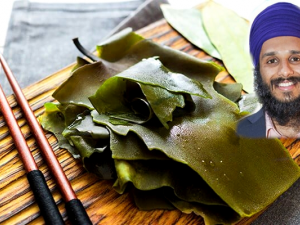Pain Relief
Harbir combines his knowledge and practice of Osteopathy, Acupuncture, massage and wealth of experience to provide pain relief for a number of different conditions. From back pain to shoulder and knee conditions to RSI and more. Harbir has also helped many patients before and after surgery, childbirth and local or International sporting competitions.
 No.1 Hyperextension Exercise
No.1 Hyperextension Exercise
The majority of people spend a large proportion of their time sitting, texting or driving, and this often results in poor posture; rounded shoulders, slumped and head forward. The curled position tightens and shortens the muscles at the front of the body and lengthens and de-conditions the muscles that straighten us up. Over time the slump position begins to feel comfortable and good posture feels unnatural. This then develops into back pain.
To undo this problem we need to strengthen the muscles that straighten us up, known as the extensor muscles of the back.
Hyperextensions do exactly this and they can be performed using the exercise machine pictured above. They train our lower back muscles, responsible for extending (the opposite of flexing/stooping) your spine. 10 repetitions every day. Time 60 secs
No.2 Heat patch
Heat has been used as a simple yet effective way to manage back pain for centuries. Heat not only relieves pain but also speeds up our recovery process. The key is to get the right type of heat.
Deep Heat has become a part of every household as have heat balms and sprays. Although these can offer relief they don't heat up the muscle, they only produce the sensation of heat which acts as a distraction to block out pain.
Using a hot water bottle, taking hot baths/showers or using a heat patch can be more effective. These actually change the temperature of our skin and muscle and results in a speeding up the recovery process following a sprain or strain for example. Takes under 60 secs to apply.
 No.3 Back belt
No.3 Back belt
People have been using belts to relieve pain for hundreds of years. It seems to be part of our hardwiring to wrap something around the painful area to block out the sensation of pain.
In the short term back belts can be handy as they can enable you to keep moving and make a quicker recovery. Used too frequently however, they can be counterintuitive as the extra support provided by the belt leads to the muscles becoming weaker, resulting in more problems in the future.
As a short term fix, during the day, they are still a useful and an effective tool for back pain relief.
 No.4 Pain relief drugs
No.4 Pain relief drugs
A lot of people are reluctant to take painkillers when they have pain. I understand why; they don't address the underlying cause, they mask your symptoms allowing you to ignore the issue rather than doing something about it and lastly it's easy to get dependant on them. Recently studies have also concluded that they have little effect in reducing back pain.
In the short term however, painkillers do have a place in managing back pain. If used correctly they can give you a window of pain relief so that you can get moving, and the gentle movement can do wonders for speeding up the healing process.
Painkillers can ease the pain so that you can get back to gentle movement and start the process of recovery. It also reduces the pain associated with an injury so that there's less distress experienced by it all. So although it doesn't fix the back pain, it may help you to be able to do what does; gentle movement.
Each family of painkillers has different methods by which they reduce pain in the body. Most people would use an anti inflammatory in the first instance, such as ibuprofen. Anti Inflammatories do not suit everyone and so it's important to follow the instruction and cautions listed on the product before taking it.
 No.5 Deep breathing
No.5 Deep breathing
The sympathetic nervous system is what causes our flight or fight response. When we're in pain this response is triggered, causing muscle tension, causing increased pain. The sympathetic nervous system and the parasympathetic (rest and digest) are opposites. If we can trigger the parasympathetic nervous system we can turn down the sympathetic, reducing muscle tension and pain.
If you want to experience this for yourself, take 60 secs to try this exercise. Sit comfortably, close your eyes, take 3 deep breaths. Now for another 3 breaths, breath in and every time you breathe out repeat in your mind "RELAXED & PAIN FREE". This sounds really basic but the only way to appreciate its effects is to try it.
Harbir Singh M.Ost Med
http://barefootdoctors.co.uk/
Related Videos:





